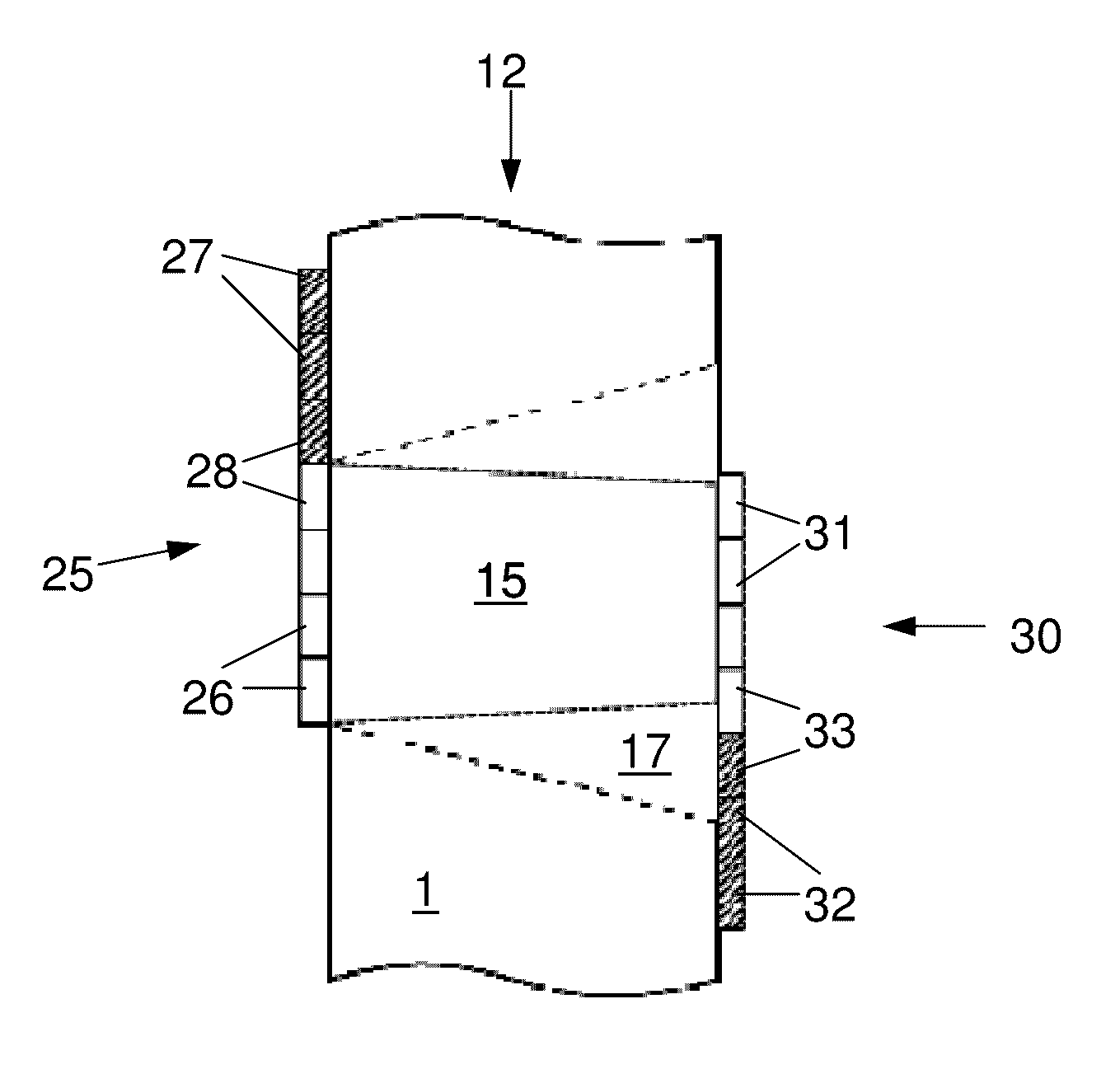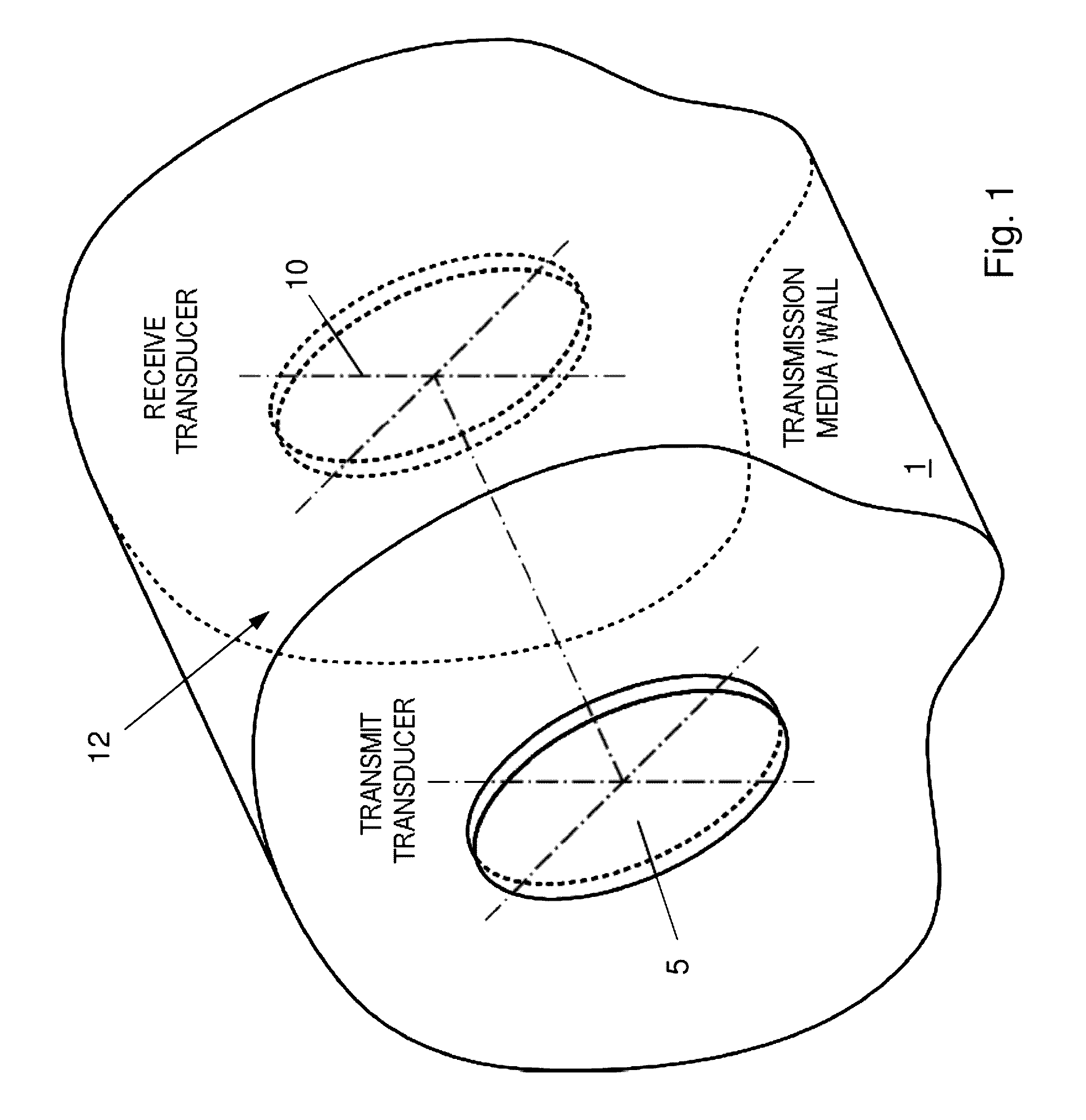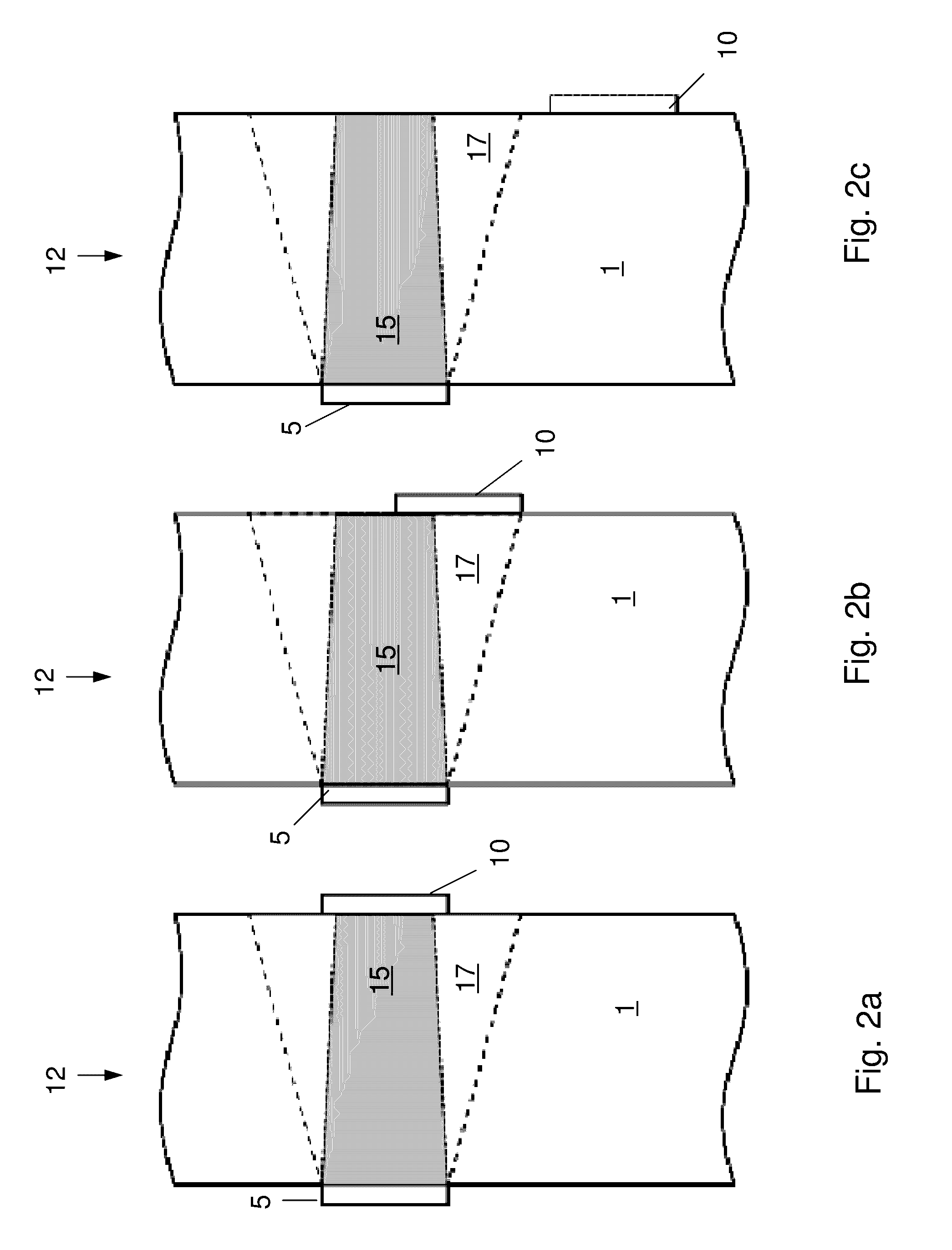Acoustic-electric channel construction and operation using adaptive transducer arrays
a transducer array and adaptive technology, applied in the field of acoustics, can solve the problems of significant impact on the capabilities of the channel(s), significant reduction in power transfer efficiency, and reduced data communication rate, so as to minimize the footprint of such systems and achieve significant loss in channel quality and performan
- Summary
- Abstract
- Description
- Claims
- Application Information
AI Technical Summary
Benefits of technology
Problems solved by technology
Method used
Image
Examples
Embodiment Construction
[0069]Referring now to the drawings, in which like reference numerals are used to refer to the same or similar elements, FIG. 1 shows an example of a simple piezoelectric-based acoustic-electric channel 12. A transmit transducer 5 and a receive transducer are axially aligned on opposite sides of a transmission wall 1. The pair of transducers 5,10 and the area of the wall between them 10, form the channel 12. In this example the transmit 5 and receive 10 transducers are circular “disk” transducers whose axes are coaxially aligned. Ideally, the transmit and receive transducer or transducers 5,10 are perfectly aligned across the wall although, as mentioned, such will not always be the case.
[0070]FIGS. 2a-2c illustrate three generalized alignment cases for a single pair of transducers, including a simplified representation of a hypothetical signal beam 15,17. Note that the diagrams show some spreading 17 of the acoustic energy beam 15 as the distance from the transmit transducer 5 incre...
PUM
| Property | Measurement | Unit |
|---|---|---|
| power transfer efficiency | aaaaa | aaaaa |
| power transfer efficiency | aaaaa | aaaaa |
| power | aaaaa | aaaaa |
Abstract
Description
Claims
Application Information
 Login to View More
Login to View More - R&D
- Intellectual Property
- Life Sciences
- Materials
- Tech Scout
- Unparalleled Data Quality
- Higher Quality Content
- 60% Fewer Hallucinations
Browse by: Latest US Patents, China's latest patents, Technical Efficacy Thesaurus, Application Domain, Technology Topic, Popular Technical Reports.
© 2025 PatSnap. All rights reserved.Legal|Privacy policy|Modern Slavery Act Transparency Statement|Sitemap|About US| Contact US: help@patsnap.com



